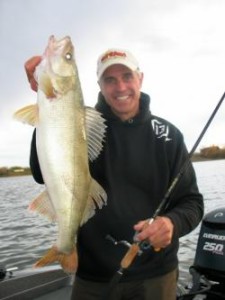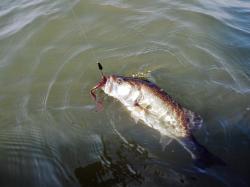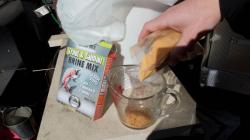Follow the ‘Birds to find fish
Where to Fish (and How To Get There)
from The Fishing Wire
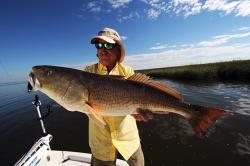
Big redfish
EUFAULA, AL (March 17, 2016) – Most honest anglers would tell you that every great day on the water is offset by countless days of head-scratching and asking questions like: “Where are they?” and “Where should I fish?” And to be completely honest, these questions are often peppered with a few choice expletives, because let’s face it, the process can be frustrating. It’s a dilemma that goes back to the first nets and lines cast into the water.
Decades ago, Ron and Al Lindner came up with the revolutionary F + L + P formula, which helped scores of anglers reach a new level of fishing success. In a nutshell, they taught how a combined understanding of your target species, location and presentation are the prerequisites for success. The system still holds water today.
Of these prerequisites, Location is often the toughest nut to crack. You can have a brain-full of fish biology and know how and when to throw every bait in your box, but if you can’t find fish, it’s all for naught.
Fact is, good fishing is a lot like buying commercial real estate: success hinges on location, location, location.
Old School Fish-Finding
Many of us remember the early days of fish-finding, learning how to repeatedly position our boats over fish-holding structure by triangulating off landmarks like a radio tower, a tall pine tree, or “that big red barn.” Or timing the distance travelled to our outboard’s speed, a water-logged paper map in our hot little hands, and eyes trained for red blips on a primitive flasher.
We also learned to study shoreline terrain and topography for clues of what might be underwater. And, during periods of low water, we took photos of rock and brush piles for future reference during high-water periods. We also kept our heads on a swivel for busting bait and birds, sentinels of the quarry we pursued. It was a ton of work! That all sound familiar?
This is why the advent of GPS is probably the most significant technological advance in fishing since the birth of the first sonar flasher. Now add new GPS-enabled technologies and our fish-finding arsenal becomes even more powerful. At the forefront of this brave new world is Humminbird’s suite of technologies, which allows anglers of all levels to find fish faster and easier than ever before. Here are a few examples from anglers around the country who use it day in, day out.
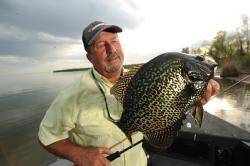
Catch a big crappie
With decades of guide experience under his belt, Fishing Hall of Famer Tom Neustrom has seen fishing technology come and go. But he’s bullish on user-generated lake mapping via Humminbird LakeMaster AutoChart Live. “It’s probably the single most important fishing tool to emerge since GPS. The fact that it comes standard in Humminbird HELIX 9, 10 and 12 CHIRP units is big news for anglers of all walks,” says Neustrom.
Legendary Minnesota guide Tom Neustrom says Humminbird’s AutoChart Live is “good for business.” He says he’s learning new patterns while simultaneously mapping and pre-fishing waters for client trips.
“When AutoChart Live came out, a lightbulb went off … this is going to crack the code of uncharted Canadian waters. Now I can create my own map in real-time, right on my Helix units. It helps me find, understand and get back to productive spots time after time. Cuts down on exhaustive looking, too.”
Case in point, this past fall Neustrom and wife Renee dialed in giant Rainy Lake crappies with the help of AutoChart Live. At nearly a quarter of a million acres, finding Rainy Lake fish can require more pre-fishing than your average lake. “Sure, it’s big water, but my system puts me on fish pretty quick,” says Neustrom.
“First thing I do is look at the lay of the land with Humminbird’s new Lake of the Woods/Rainy PLUS card, which gives me satellite imagery overlay on depth contours. Before I even leave the dock, I drop waypoints on the map, setting up a milk run of back bays and main lake points with adjacent deep water.”
Next, he idles over waypoints with Side Imaging, looking for massive schools of crappies. Once found, he positions directly over the fish with his HELIX 10 SI GPS set to 2D Sonar and Down Imaging in split screen view.
“In fall, crappies will set up on rock-to-mud transitions to feed on roaming baitfish or clouds of bugs that emerge out of the mud, both of which I can see on my sonar. If the red marks are stair-stepped I know the crappies are actively feeding,” says Neustrom.
Speaking frankly, he says AutoChart Live is good for business. “As a guide, your job is to get customers bit, so time is everything. With AutoChart Live I’ll go out to a new lake and map while I’m pre-fishing. It’s made a huge difference. I’m not only finding fish faster than before, I’m learning new patterns that translate to other waters.”
That’s especially good news for retailers: Once limited to ONIX units, anglers can choose units from the HELIX 9, 10 and 12 CHIRP families that best suit boat size, fishing style and budget, and still benefit from the ability to create maps in real-time with AutoChart Live, no PC, Cloud or server required.
Bulls By Satellite

Maps from Lakemaster
1,500 miles south of Neustrom, pro redfish anglers “Cajun” Phil and Kevin Broussard are putting another brand-new Humminbird product through the paces deep in Louisiana’s backcountry.
That new tech is Humminbird’s Louisiana Delta v.1 card, which provides unprecedented high-resolution satellite photography of the Louisiana Delta on one micro card (with SD adapter). Anglers get real-life aerial views of shorelines, waterways, landmarks, obstructions, roads, marinas, canals, and channels. Also includes navigation aids, lake names, points of interest and more, visible right on the chart view of Humminbird units.
“Kevin and I got the new product and right off the bat, we loved it. Super-bright readout on our HELIX units, even in the sun. We’ve used it all across the state of the Louisiana: Houma, Delacroix, Shell Beach, into the Biloxi Marsh and beyond. Incredible detail and accuracy that eliminates a lot of guesswork,” says Cajun Phil.
In practice, the card helps Phil and Kevin bee-line to virtually unexplored big redfish waters nearly impossible to reach with standard paper maps. “The LakeMaster aerials show us which inlets are going to get us in and out to these little ponds; eliminates running down dead-ends and having to back all the way out. And when you’re back in these little ponds, it shows you the true cuts. And man, some of these spots hold redfish that likely hadn’t ever even seen a lure …”
Florida: Inshore and Off-Shore

Releasing a fish you dont’t want to eat
Meanwhile, in Florida’s big redfish country, Sarasota-based pro angler and guide Captain Geoff Page is similarly excited by what Humminbird’s doing.
“I’ve been blown away by the HELIX 10 SI GPS I installed in my Pathfinder. Big, bright display plus the power of AutoChart Live. And having fished in Louisiana with Humminbird’s new aerial imagery card, it’s gonna be a big deal with our light-tackle inshore and off-shore structure fishing,” says Page.
Fishing inshore, Page typically chases snook, redfish and flounder near flowing water or in backcountry bays. “Other than shipping channels and deep intercoastal waterways, we fish a lot of 4-6 feet, even less. It’s about the edges of shallow water. Only a foot difference can be a fish magnet. Over a year many of these areas will change: where water was running may be a sandbar now. If I’m blowing through shallow areas – especially at low tide, I need to know that my data is dialed-in. You can see how this will be an even bigger deal to guys who don’t get out on the same waters every day.”
Florida’s Captain Geoff Page is impressed with the brightness of the Humminbird HELIX 10 screen in full sun, and the power of AutoChart Live gives him to dial in on fish-holding spots and navigate ever-changing inshore waters.
He adds: “From a navigation perspective, Humminbird’s AutoChart Live is data that I know I’ve collected, so I have a high confidence that it’s accurate and it was done right! Technologies like AutoChart Live help me stay on what’s happening.”
Like the Broussard’s search for isolated redfish ponds, Page keys in on difficult-to-reach back bays: “I look for oyster bars and shallow areas with deep waters behind them. But you have to navigate through some shallow water areas to get there. Tides are lower in winter due to predominant north winds, and that only adds to the challenge. That’s the power of Humminbird’s aerial imagery over regular charts.”
But Florida is more than stellar inshore fishing, it’s got some serious off-shore haunts as well. Equally passionate structure anglers run a few miles into Gulf of Mexico, chasing grouper and red snapper in 28-foot center consoles or Contender-type boats up to 40 feet.
“The Gulf can be a desert for miles, then you hit one area of bottom change and fish are everywhere. Now, with AutoChart Live, you can map while you’re running and discover new areas, like sharp ledges or hard-bottom edges, where structure guys jig or troll plugs.”
Thanks to these technologies, Page says Humminbird is rapidly gaining ground with offshore anglers who once associated the brand with freshwater bass fishing. More anglers are discovering Humminbird’s ability to map in real time, giant bright displays, touch screens, MFDs like ION, plus CHIRP in HELIX, ONIX and ION—not to mention intuitive navigation features.
“There’s a real shift going on,” says Page.
Fact is, from the Canadian Shield to the Gulf of Mexico, anglers are still following ‘Birds to find and catch more fish. Some things never change.
For more information visit humminbird.com, contact Humminbird, 678 Humminbird Lane, Eufaula, AL 36027, or call 800-633-1468.
About Johnson Outdoors Marine Electronics, Inc.
Johnson Outdoors Marine Electronics, Inc. is a wholly owned subsidiary of Johnson Outdoors and consists of the Humminbird®, Minn Kota® and Cannon® brands. Humminbird® is a leading global innovator and manufacturer of marine electronics products including fishfinders, multifunction displays, autopilots, ice flashers, and premium cartography products. Minn Kota® is the world’s leading manufacturer of electric trolling motors, as well as offers a complete line of shallow water anchors, battery chargers and marine accessories. Cannon® is the leader in controlled-depth fishing and includes a full line of downrigger products and accessories.


